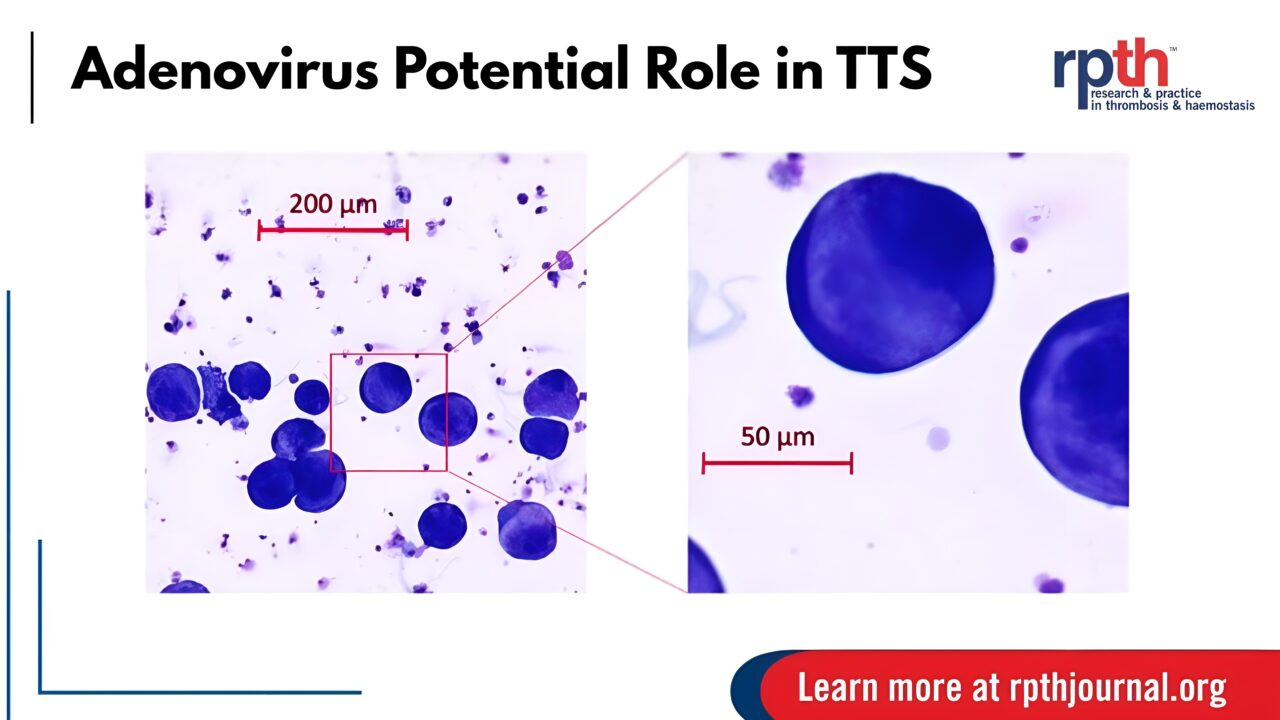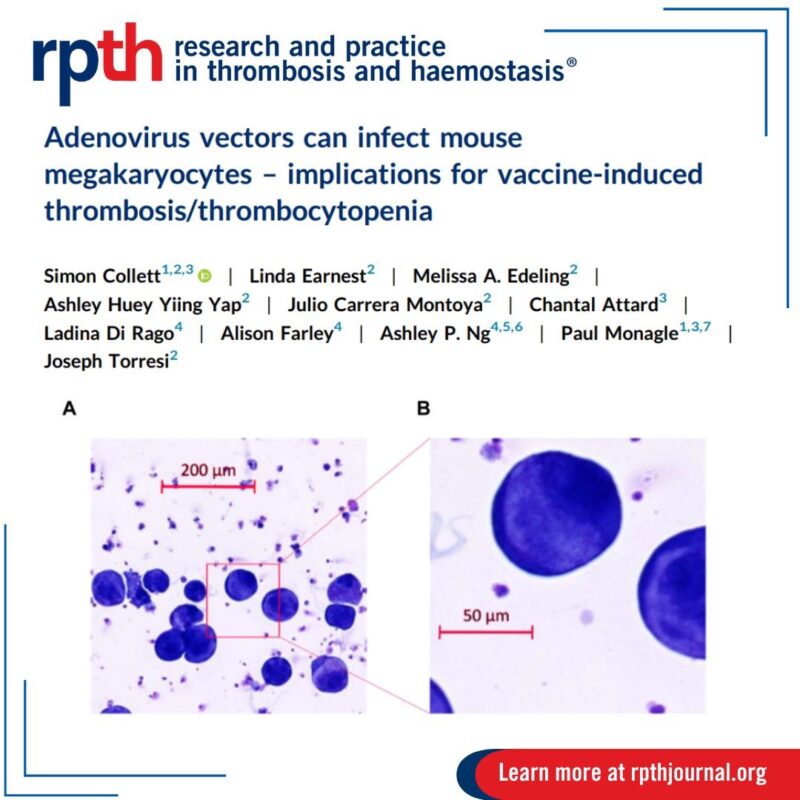
1 Hypothesis, Multiple Implications: Adenoviral Vector Vaccines and Thrombosis with Thrombocytopenia Syndrome
The RPTH Journal (Research and Practice in Thrombosis and Haemostasis) shared an insightful post on LinkedIn:
”This new study investigates adenoviral vector vaccine-associated thrombosis/thrombocytopenia risk.
- Adenoviral vectors can infect megakaryocytes
- Concurrent infection may increase chemokine receptor expression
Senior Author: Joseph Torresi”
Read the full article here.
In the article ”Adenovirus vectors can infect mouse megakaryocytes – implications for vaccine-induced thrombosis/thrombocytopenia” by Simon Collett, Joseph Torresi et al. in the RPTH Journal, a potential role of adenoviral vector vaccines in inducing TTS is discussed.
Adenoviruses, adenoviral vector-based vaccines, and gene delivery systems have been associated with thrombosis with thrombocytopenia syndrome (TTS), a rare but serious complication.
The precise mechanisms underlying this condition remain unclear.
It was previously hypothesized that megakaryocytes (MKs)—the precursor cells responsible for platelet production—play a central role in the development of adenovirus- or vector-induced TTS.
Emerging evidence supports the notion that MKs are a heterogeneous population, including subsets with distinct immune-related functions.
This study demonstrates that adenoviral infection preferentially targets higher-ploidy CD41⁺CD42⁺ MKs and those expressing high levels of CXCR4 (CXCR4^hi).
These findings implicate specific MK subsets and surface receptors in the cellular response to adenoviral exposure and provide a potential mechanistic link to thrombocytopenia and thrombotic events observed post-vaccination or gene therapy.

Find all the latest scientific advancements in the World of Thrombosis posted in Hemostasis Today.
-
Dec 19, 2025, 13:30PPTA Europe’s Holiday Message: Wishing Health, Rest, and Renewal for 2026
-
Dec 19, 2025, 13:22If You Were Reading a “Bible for Blood Donation Volunteers,” What’s the ONE Thing That Must Be in It?
-
Dec 19, 2025, 12:52Julia Owens: Stroke Remains One of the World’s Leading Causes of Death and Disability
-
Dec 19, 2025, 12:03Pradeep Natarajan: Our New Genetic Study of Aortic Stenosis in ~3M
-
Dec 19, 2025, 11:47ESO Blog: Anna Gardin on Stroke Risk in the Era of Climate Extremes
-
Dec 19, 2025, 10:51Sarah Elkourashy Presents Insights on Caplacizumab for TTP at ASH25
-
Dec 19, 2025, 10:08Camilla Lombardi Shares an EHC Nutrition Guide for People with Bleeding Disorders
-
Dec 19, 2025, 09:56Danny Hsu Shares The ”I-WISh” Study by Nichola Cooper on ITP
-
Dec 19, 2025, 09:39Paul Bolaji: A Landmark Achievement -The Historic 1st Nigerian Stroke Leaders’ Summit 2025
